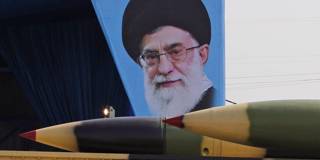Forty years after the revolution that ousted the Shah, Iran’s unique political-religious system and government appears strong enough to withstand US pressure and to ride out the country's current economic difficulties. So how should the US minimize the risks to the region posed by the regime?
NEW YORK – US President Donald Trump’s administration has singled out Iran – even more than Russia, China, or North Korea – with sustained pressure over the past two and a half years. The United States has withdrawn from the 2015 nuclear deal (the Joint Comprehensive Plan of Action, or JCPOA), designated an arm of Iran’s military (the Islamic Revolutionary Guard Corps) as a foreign terrorist organization, imposed economic sanctions against nearly one thousand individuals and entities, and taken steps to make it extremely difficult for Iran to sell its oil.

NEW YORK – US President Donald Trump’s administration has singled out Iran – even more than Russia, China, or North Korea – with sustained pressure over the past two and a half years. The United States has withdrawn from the 2015 nuclear deal (the Joint Comprehensive Plan of Action, or JCPOA), designated an arm of Iran’s military (the Islamic Revolutionary Guard Corps) as a foreign terrorist organization, imposed economic sanctions against nearly one thousand individuals and entities, and taken steps to make it extremely difficult for Iran to sell its oil.